Update 16/09/2020: I’ve learned a lot more about tuning your berimbau in the past year. This post is now somewhat outdated, and I’m planning to publish an update soon.
The sound quality of your berimbau depends heavily on the quality of the material and manufacturing of the different parts. If the shape of your cabaça is awful, then getting a good sound will be very hard if not impossible. On the other hand, you can have a top notch berimbau sound really bad quite easily. The way you arm your berimbau is of great importance if you want to get a good sound out of any berimbau. There are a few tips & tricks which can help you in tuning your berimbau. Most people who have been playing the berimbau for a while will already have discovered most tricks, but some of them might be useful for beginning or intermediate players.
Mix & Match
Most capoeiras only own one berimbau which they bought from their teacher or at a shop. Most of the time, you have no choice in the different parts as the berimbau is sold as a whole. If you are looking to purchase a berimbau and you can choose the different parts separately, or if you have a collection of vergas and cabaças laying around, then knowing how to assemble a berimbau is crucial.
A big cabaça (used for a gunga or berraboi) needs a thin verga.
A normal cabaça (used for a médio) needs an average verga.
A small cabaça (used for a viola) needs a thick and rigid verga.
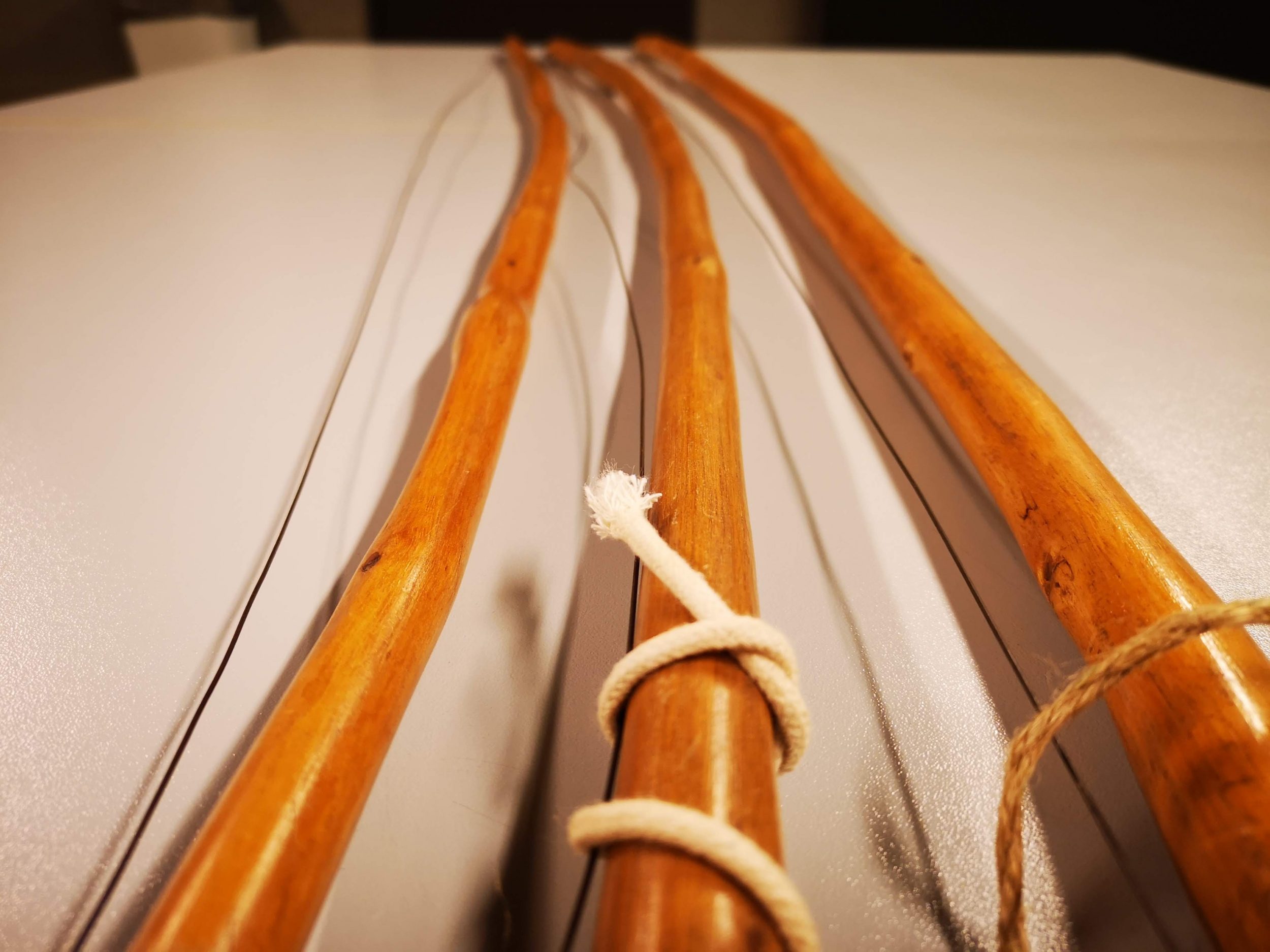
When playing a gunga, use a thick baqueta. It will help you play more firm with clear notes.
When playing a viola, use a light baqueta. It will help you play quicker, so you can play more (diffcult) variations.
If you can choose between a pedra (stone) or a dobrão (metal coin), choose the one that is most comfortable to you. But be aware that using a dobrão might result in a more metal-like sound as opposed to using a pedra which makes your berimbau sound more natural.
When choosing a cabaça, make sure the side which will go against the verga is flat. If the cabaça has a curve on that side, it won’t stay in place when playing. Also the transfer of the vibrations from the arame won’t be optimal. If there is an inward curve, there will be a small space between the verga and cabaça. This will create an unwanted noise.
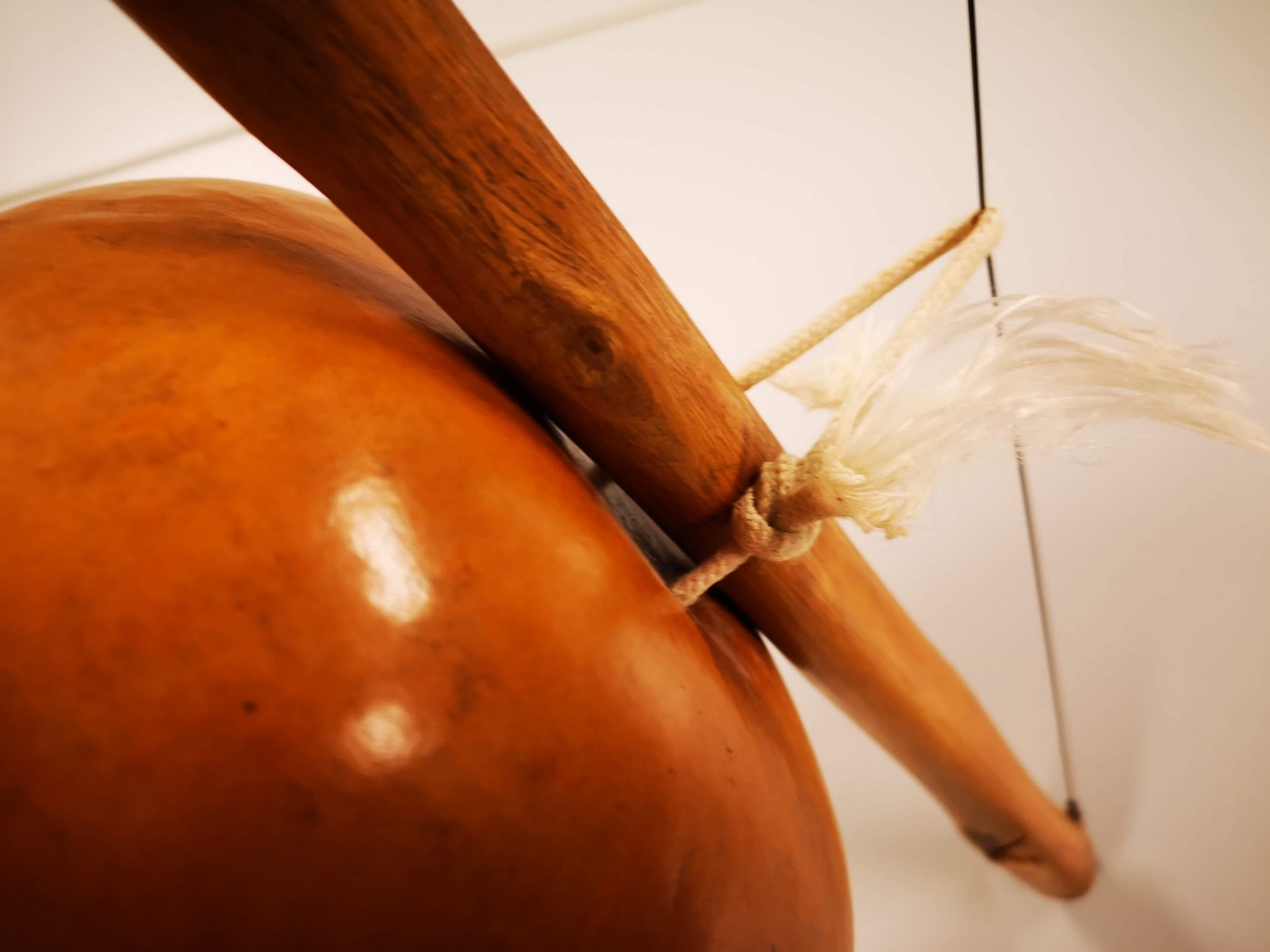
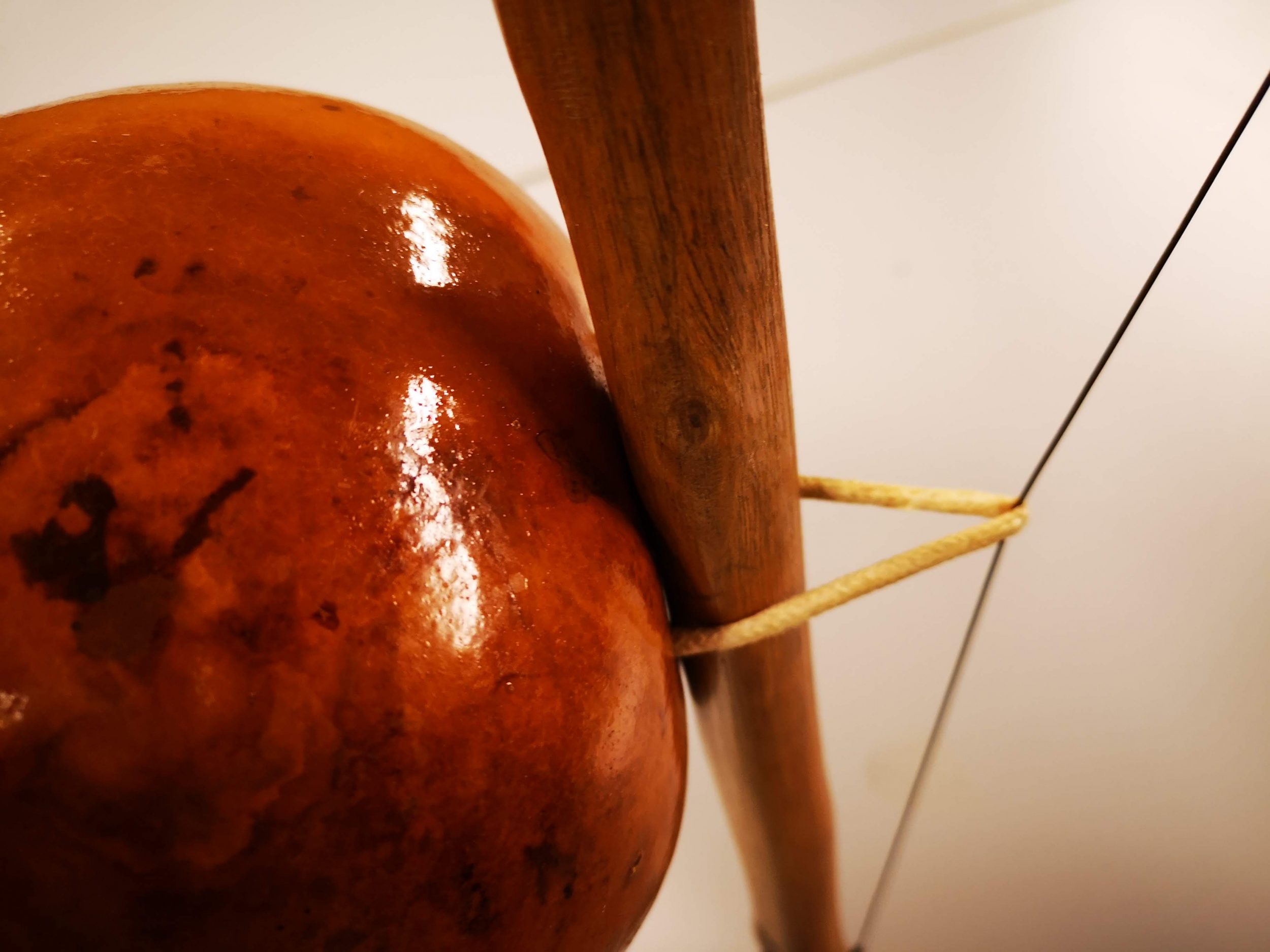
Measurements
There are certain measurements you should take into account when assembling a berimbau as well. These measurements are quite old and have been passed down from teacher to student as a general guideline, not as exact rules to follow. If you have small hands, account for some extra margin.
A typical verga is between 7 and 9 handpalms or (1m40 and 1m80) long.
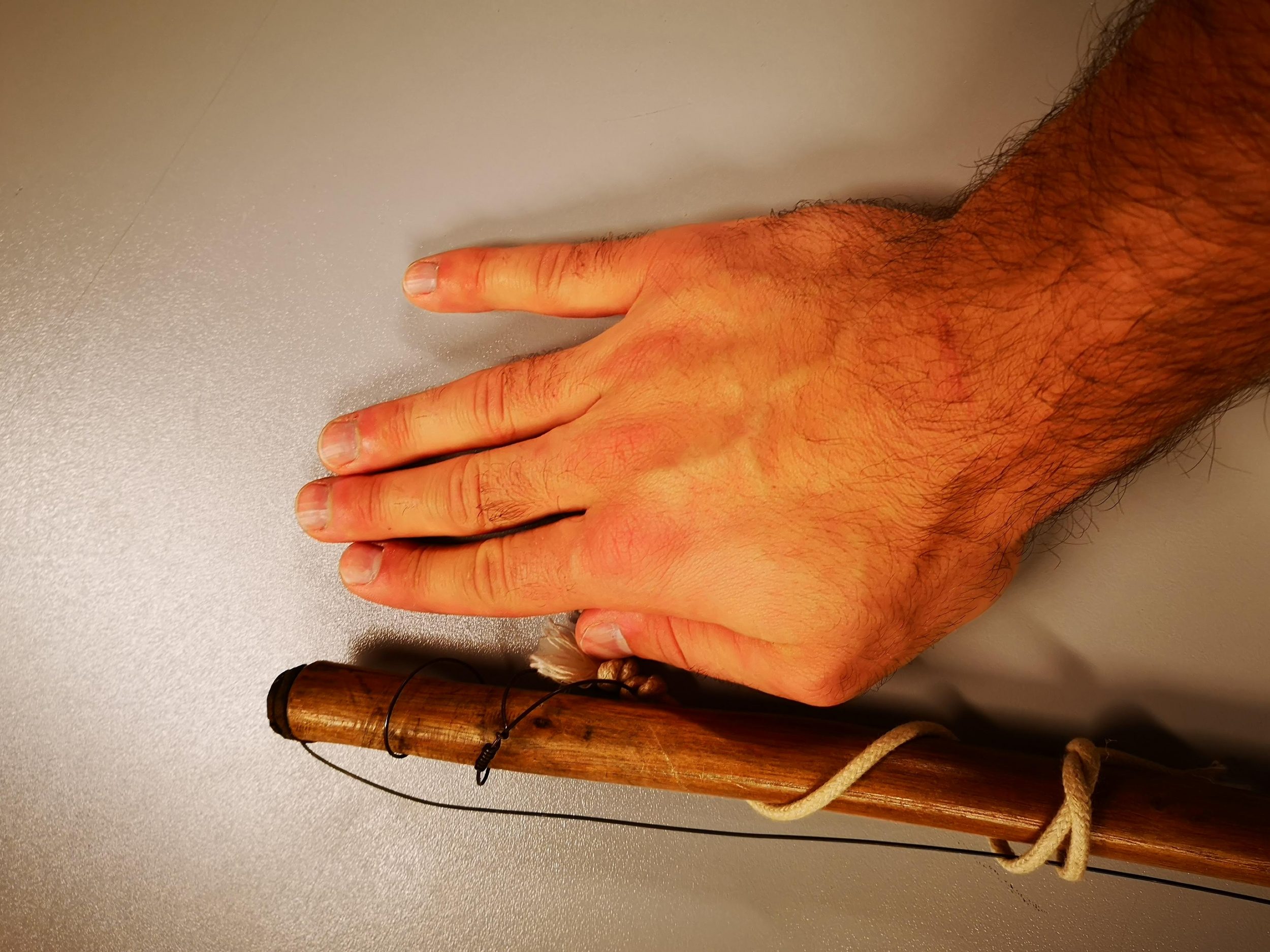
The distance from the bottom end of your verga to the rope holding your cabaça should be 1 hand (thumb to pinky stretched, vertical).
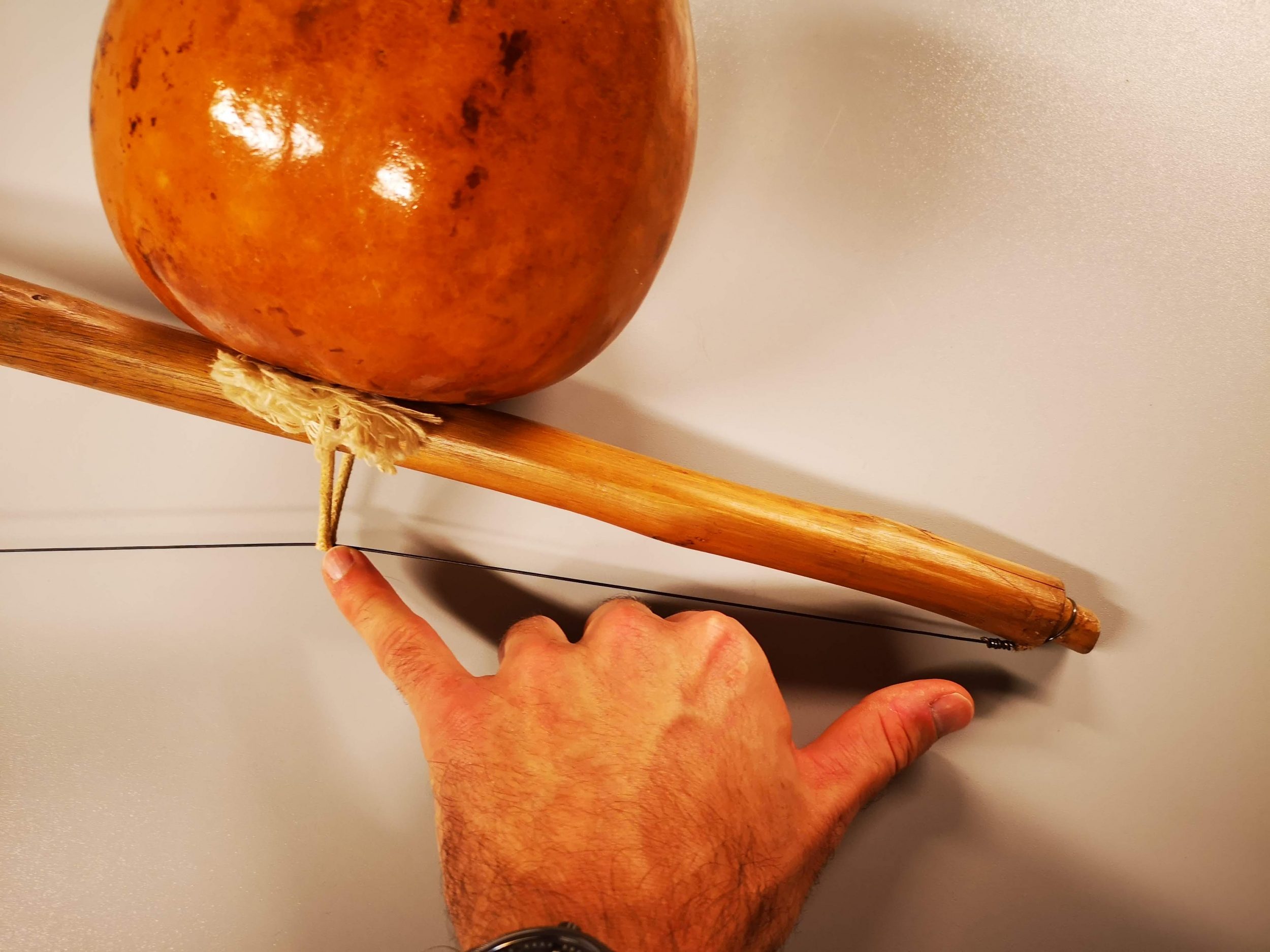
At its widest point, the distance between the verga and the arame should be 1 handpalm (thumb to pinky, horizontal, fingers slightly separated).
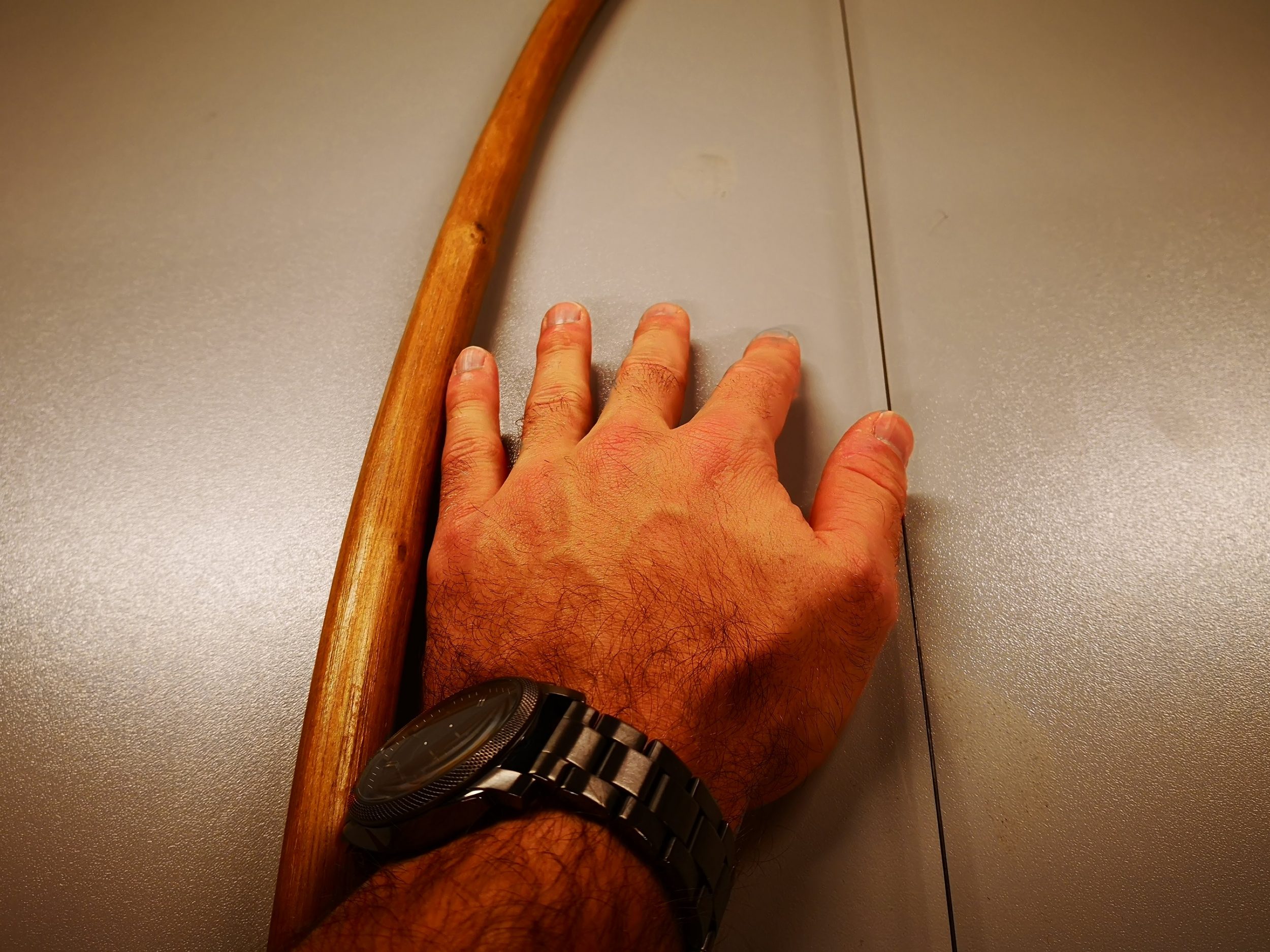
The rope in your cabaça should fit 3 fingers. One accounts for the diameter of the verga, the other two account for the space needed to manoeuver your dobrão/pedra.
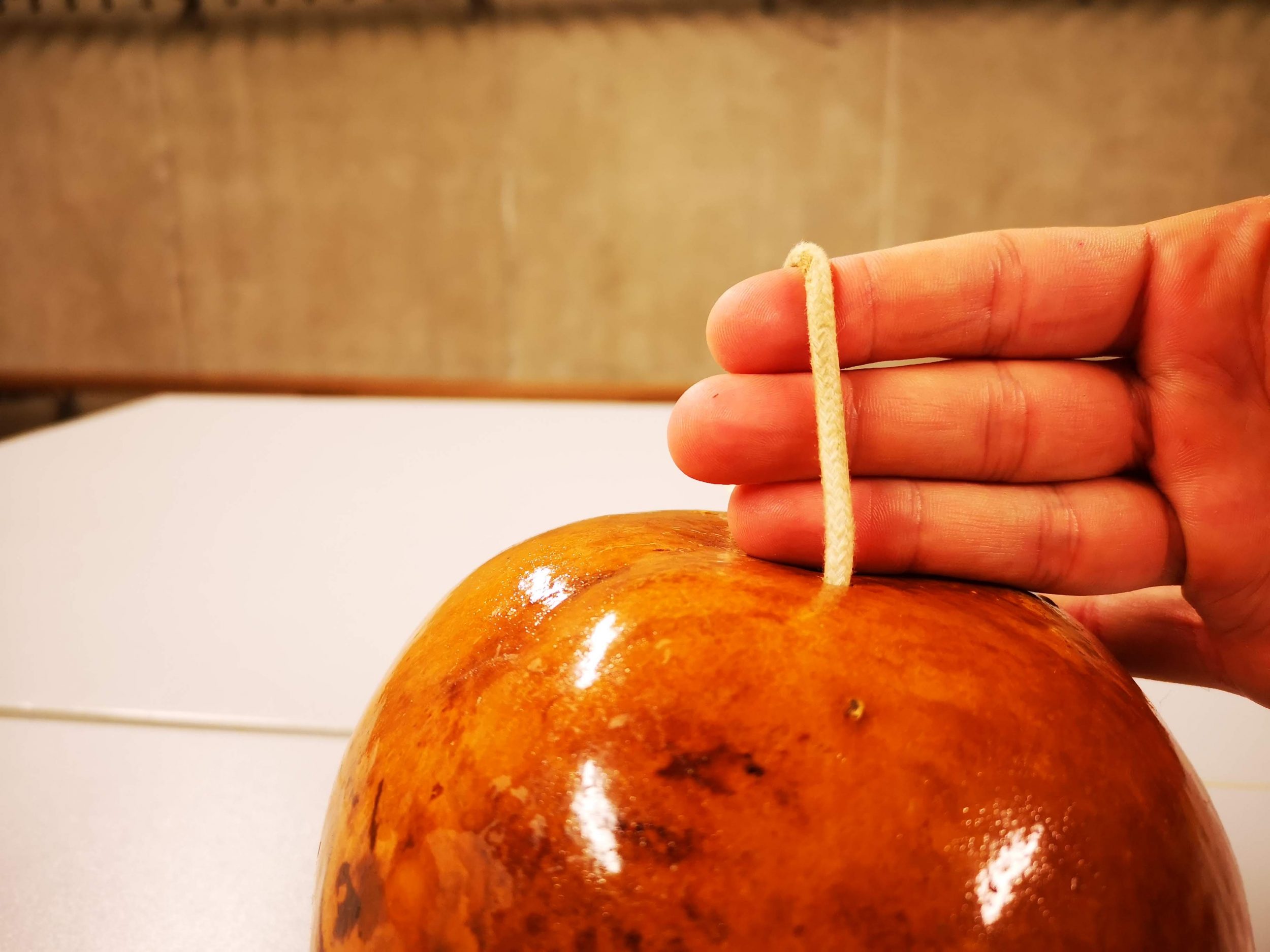
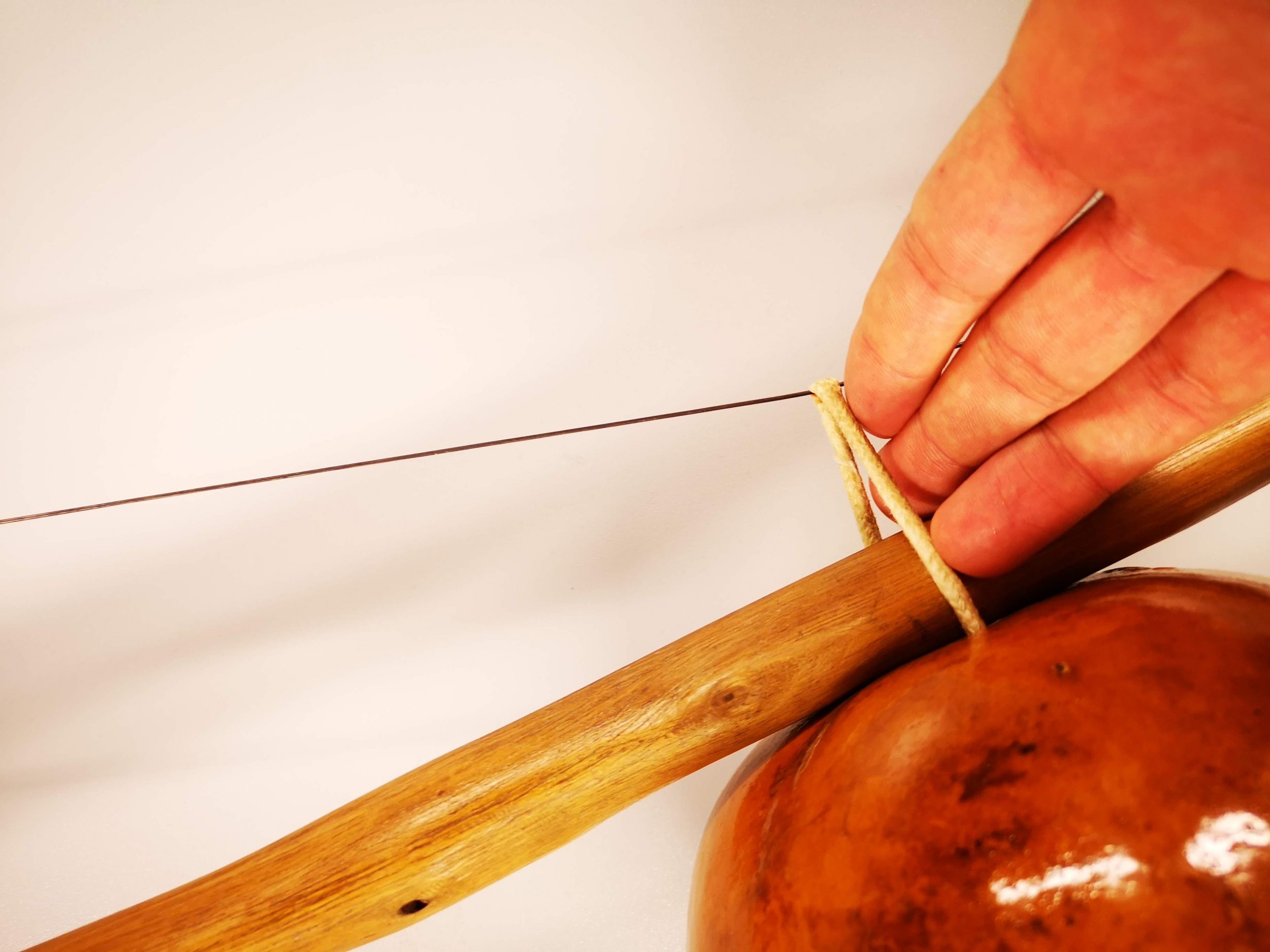
When holding your dobrão or pedra in position, make sure to have 1 or 2 cm of free space to move.
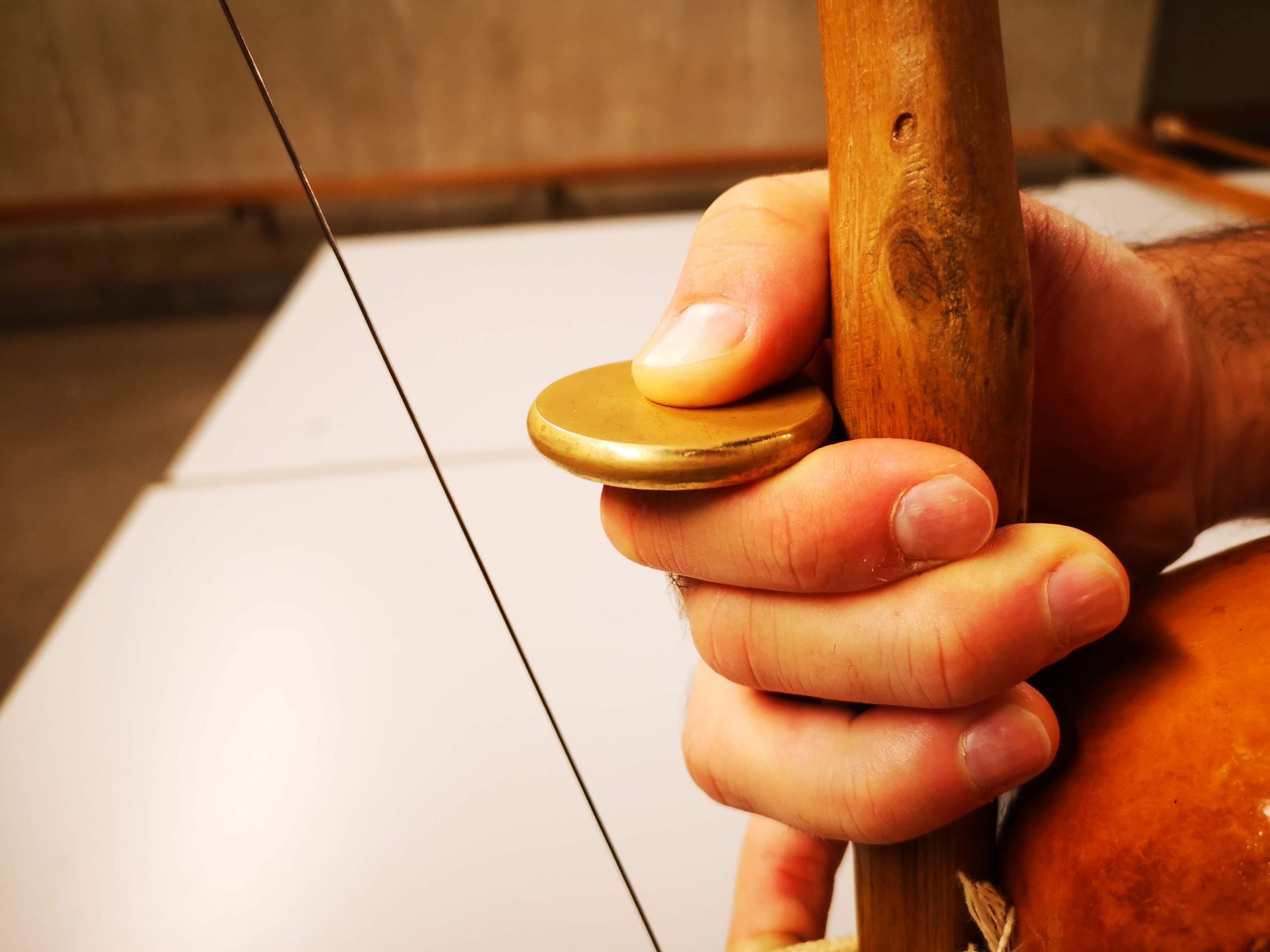
In the bateria
Tuning one berimbau to make it sound great is one thing. But when assembling a bateria (assuming your are using multiple berimbaus), your berimbaus should be tuned together. This is a common mistake in any capoeira roda: every berimbau sounds good on its own, but when played together there is no harmony.
There’s a simple trick to tune your three berimbaus:
- The high note of your gunga should match the low note of the médio.
- The high note of the médio should match the low note of the viola.
This will make for three pitches which gradually ascend. When played together, the berimbaus will be in harmony and will empower eachother. This technique makes sure a viola sounds like a viola and a medio sounds like a medio.
— Vinho